Dell XPS 15 (9520) review: a great combo of portability and performance
The updated Dell XPS 15 offers a performance boost, an excellent OLED screen, portability and good battery life.

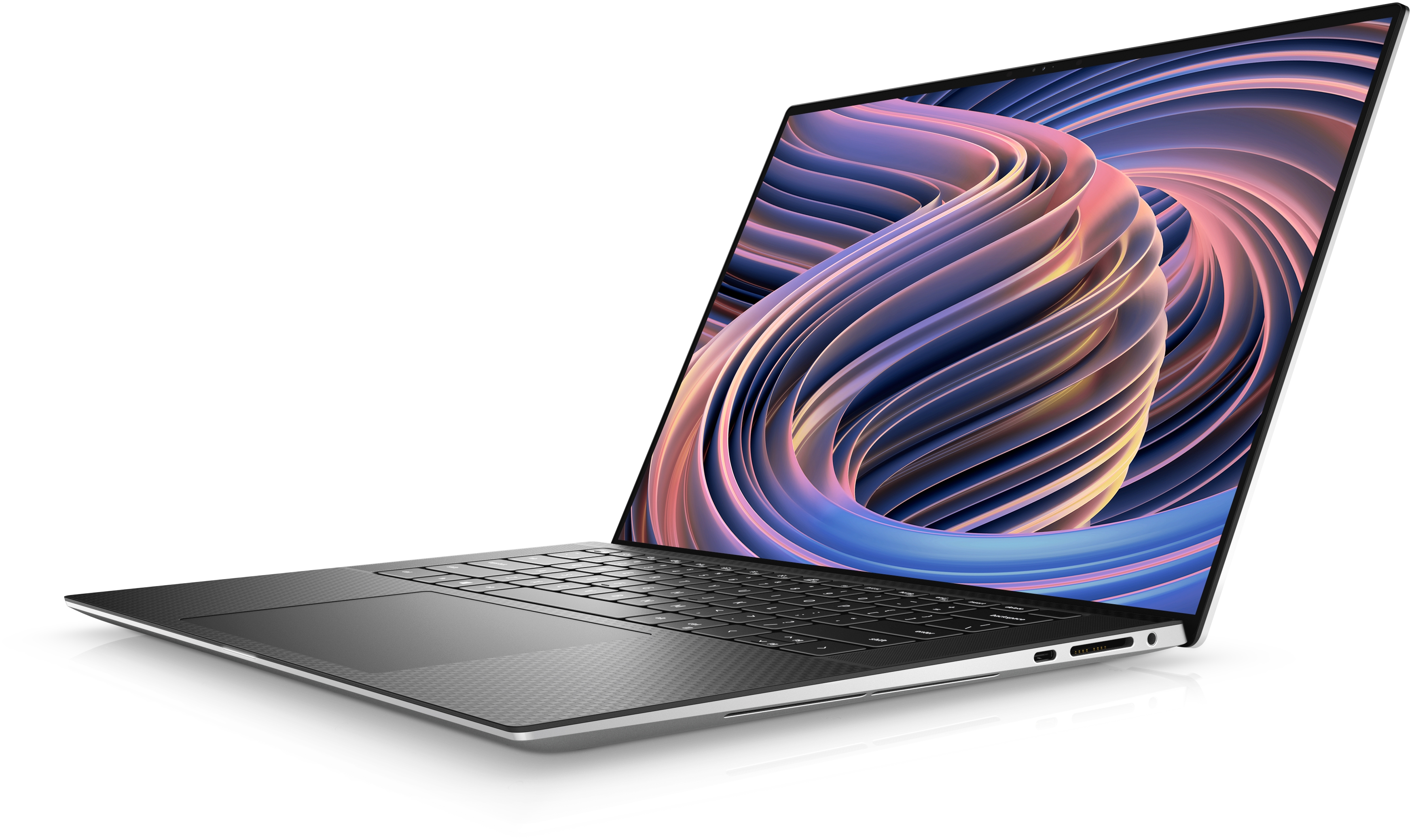
The Dell XPS 15 (9520) delivers a brilliant blend of price, performance and portability for users who need processing power on the go. It’s a little faster and has a bit longer battery life than last year's model, along with excellent overall design.
-
+
Excellent performance
-
+
OLED screen offers bright, vivid colors
-
+
Long battery life
-
-
Gaming performance is not great
-
-
The OLED screen isn't as visible outdoors
-
-
Not the lightest of laptops
Why you can trust T3

Like the turning of the seasons, another year brings another iteration of Dell’s XPS product line, its range of premium laptops for creative people. This year, the refresh of the mid-range XPS 15 laptop adds 12th-gen Intel CPUs and faster DDR5 system memory, which deliver a significant performance bump.
Otherwise, though, the XPS 15 (9520) is pretty much the same as last year’s model, which is not a bad thing. This is a fast, nicely designed laptop that provides a bit more workspace than the smaller XPS 13.
For the price, the performance and portability of the XPS 15 (9520) put it in the conversation among the best laptops of 2022. And if you want to know why, check out the how we test page to learn about T3's testing process.
Now, on to the review.
DELL XPS 15 (9520): PRICE & AVAILABILITY
The Dell XPS 15 (9520) is available now, starting at $1,549 / £1506 / AU$3229. The review model I tested – including a 14-core i7 CPU, 16GB of DDR5 RAM and a GeForce 3050 Ti GPU, as well as the 15.6-inch, 3456 x 2160 pixel OLED screen and a platinum silver finish – is priced at $2,399 / £2199 / AU$3229.
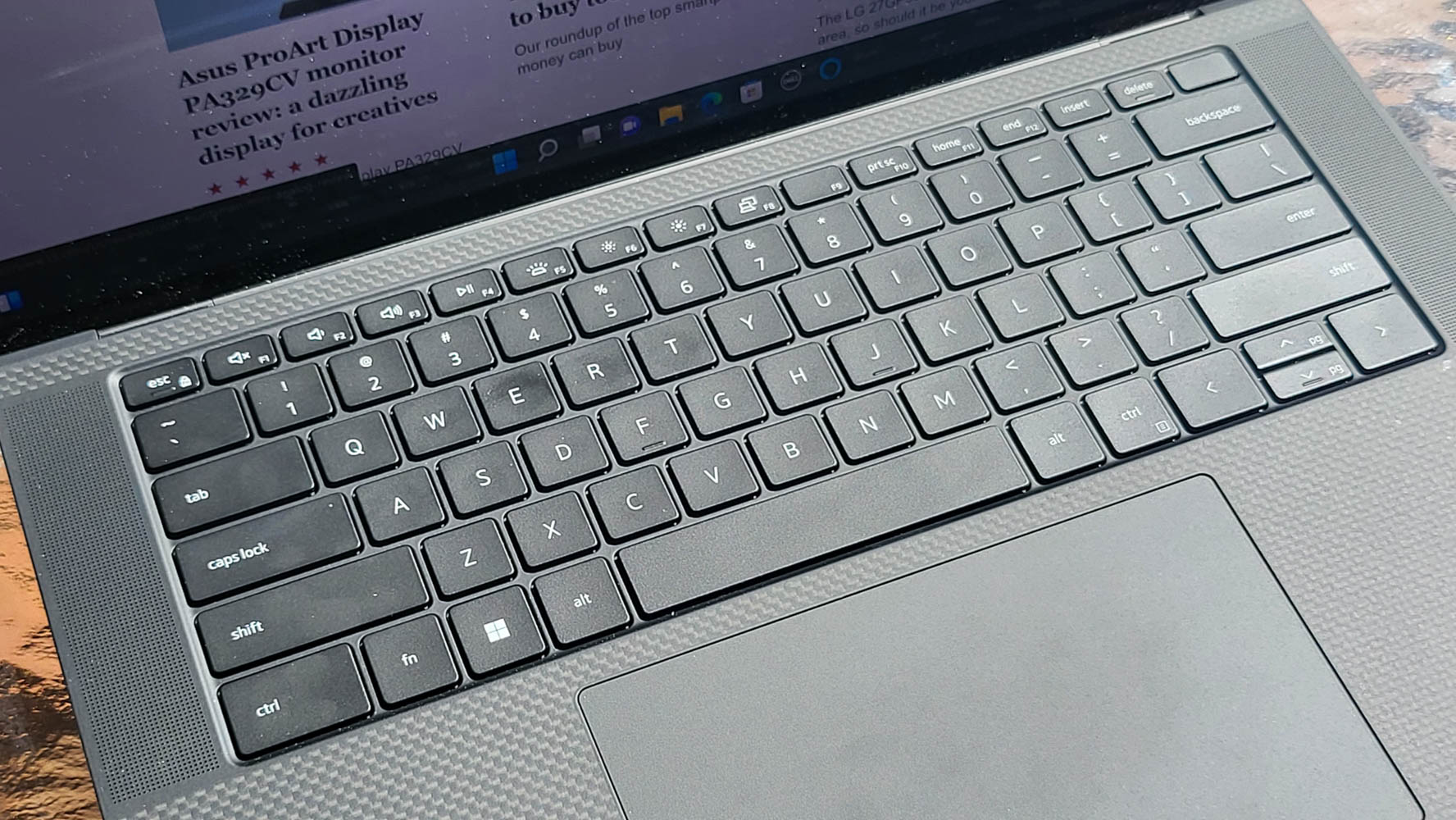
The Dell XPS 15 (9520) has a wide keyboard with chiclet-style keys and a large touchpad.
DELL XPS 15 (9520) REVIEW: DESIGN & BUILD
For the XPS 15, Dell has taken an approach of “if it ain’t broke, don’t fix it,” with this new version looking pretty much identical to last year's model. That’s not a problem, though, as the aluminum case design feels tough enough to stand up to plenty of use, and it houses a large, wide keyboard with chiclet-style keys across most of the width.
Speakers are on either side of the keyboard, which produces excellent sound with plenty of volume and presence. There is no numeric keypad, though, which is a pain if you have to do a lot of data entry.
At around 4.3 pounds, this is not the lightest of laptops. You also need to add on another pound for the hefty 130W USB charger if you are going away for more than a day, so that could be a bit of a strain on the shoulder over time.
The touchpad is also on the larger side, which I found a little difficult to use. It responds to a gentle touch of the fingertips but ignores an accidental palm touch as it should. There is also a satisfying click when you press down with one finger for a left mouse click or with two fingers for a right-click. However, I did find that the sheer size of the touchpad made it more difficult to reach the bottom-right corner for the other way of performing a right-click.
There are a decent number of connections: two Thunderbolt 4 ports on the left side, plus a USB-C 3.2 Gen 2 port on the right, as well as a headphone socket and an SD Card slot. Either the Thunderbolt or USB-C ports can be used to power the laptop with an included charger, so you don’t have to run the cable behind it when charging. The power adapter converts any of these ports into a standard USB 3.2 Gen 2 for older devices.
The 15.6-inch, 3456 x 2160 pixel OLED screen remains the highlight of the design. It has excellent, vivid colors alongside deep shadows. I measured the peak brightness of the display at just under 350 candelas per square meter, which is bright enough to be easily visible in any indoor lighting, though it looks a little pale outdoors. If you are using your laptop a lot outside, a brighter standard display might be preferable. Dell offers a 4K standard LED option for the same price that offers higher brightness.
The OLED display I tested is DisplayHDR 500-certified, but it doesn’t support the HDR10 or Dolby Vision standards. But movies and TV still look great. download Season 4 of Stranger Things from Netflix before a flight and you’ll have the entire row rooting for those crazy kids as they get trapped in the dull gloom of the Upside Down.
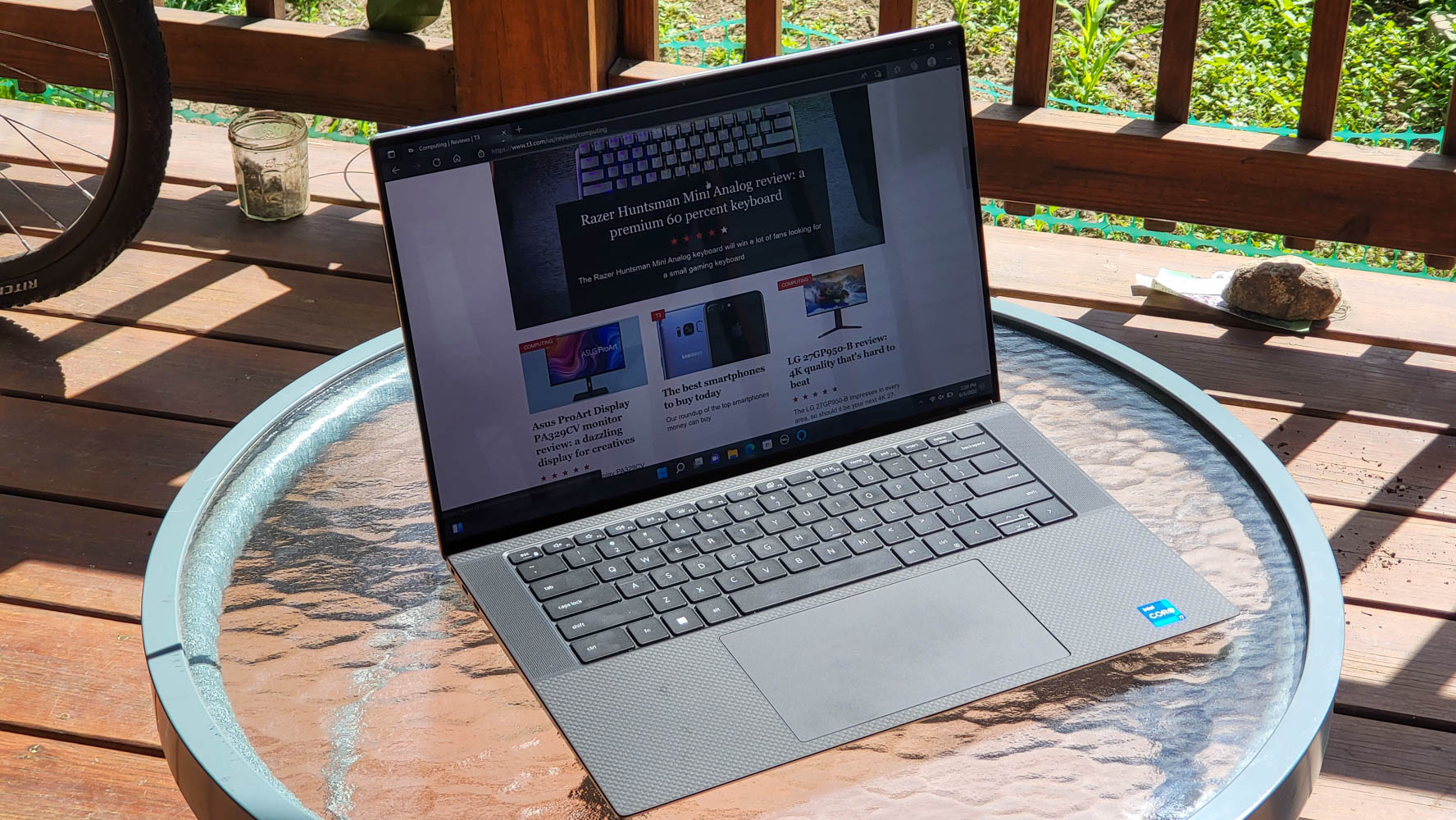
The laptop features a 15.6-inch, 3456 x 2160 pixel OLED screen.
DELL XPS 15 (9520) REVIEW: PERFORMANCE & FEATURES
So if the exterior of the XPS 15 (9520) is mostly unchanged, what about the inside? There have been a lot of changes here, including a new generation of CPUs and faster memory.
The brains of the XPS 15 (9520) is a 12th-gen Intel i7 12700H processor, which includes 14 cores and runs at up to 4.7GHz. That’s a significant bump from last year's model, an 11th-gen i7 processor with eight cores and a peak speed of 4.6GHz. The memory inside the laptop has also been upgraded, going from DDR4 type to DDR5. So, while last year's model could read and write data to memory at four times the speed of the memory clock, the new model can do this at five times the speed.
What does all of that technical stuff mean? It means more processor cores that can run slightly faster and a significant bump in the speed at which data can be moved around, which means a faster computer.
In the PCMark 10 office benchmark test, the XPS 15 (9520) achieved a score of 6219. Last year's XPS 15 managed a score of 6030, so that’s a 5% performance increase, which is in line with the speed increase I’ve seen from other laptops using the 12th-gen processors from Intel. And I definitely saw a speed bump in business and photo editing apps on this laptop: big Excel spreadsheets recalculated more rapidly and Photoshop filters were applied noticeably faster.
The XPS 15 (9520) also includes an Nvidia GeForce 3050 Ti graphics chip, which means it has a decent amount of graphics power under the hood. That is the same as last year's XPS 15, but it’s still a good pick for casual gaming.
I found that it managed about 40 frames per second in Doom Eternal at the native resolution of the screen in Ultra Nightmare graphics mode. This is much less smooth and realistic than the hundreds of frames per second you get from a dedicated gaming laptop like the Alienware x17 R2, but it’s still enough for a bit of casual violence. Doom Eternal also looked great on the OLED screen, with satisfyingly real-looking blood spatters alongside deep, dark shadows.
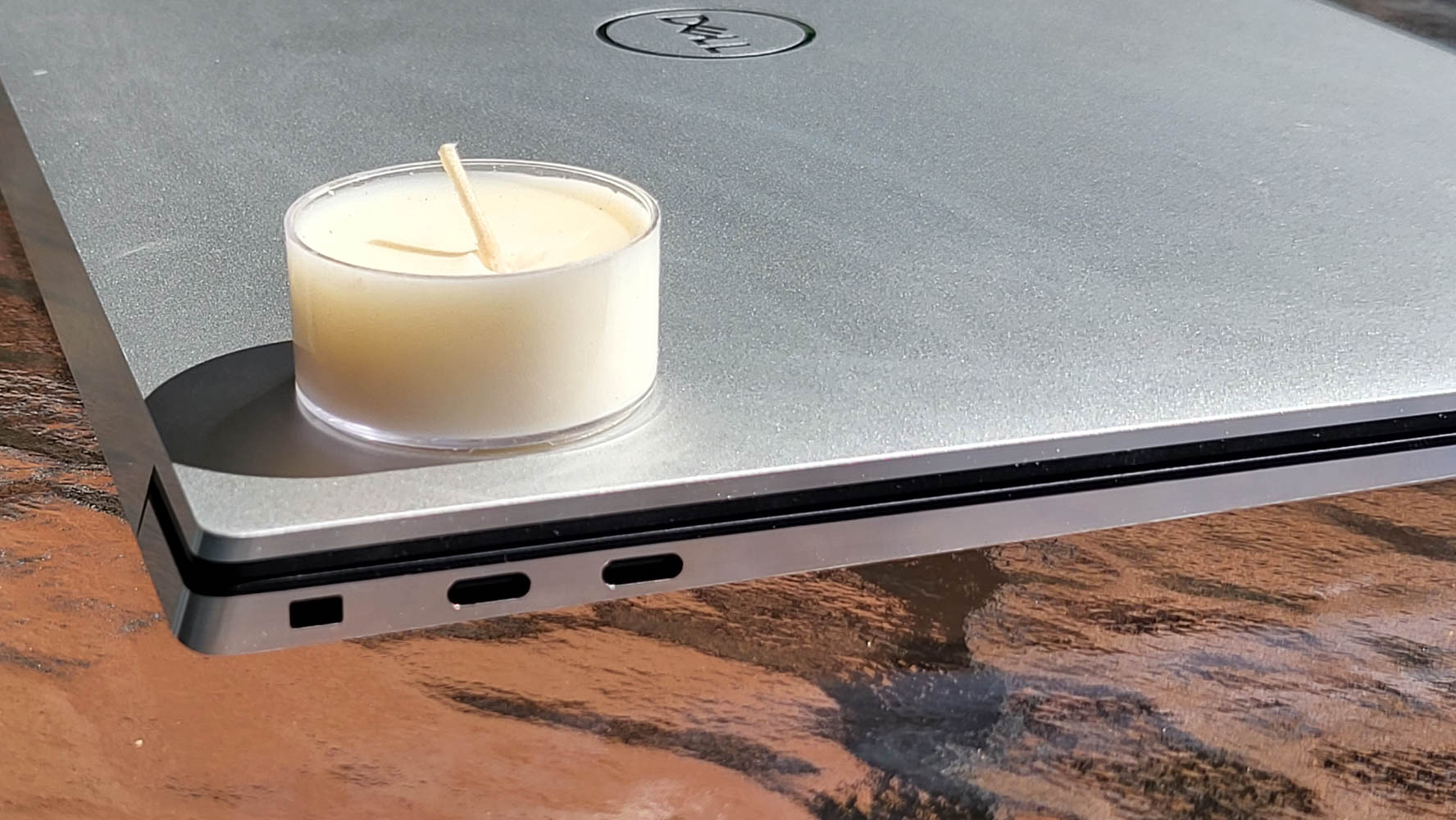
The updated XPS 15 offers several ports and connections.
DELL XPS 15 (9520) REVIEW: BATTERY PERFORMANCE
Of course, a fast laptop is no use if you can’t use it on the road, but the XPS 15 (9520) had no problems there.
I found that a fully charged battery was good for just over nine hours of video playback in the PCMark 10 battery test with the screen set to a brightness of about 200 cd/m2, a typical level for indoor use. That’s good enough to get you through a couple of movies on a cross-country flight, or for a typical day of work away from a power source.
DELL XPS 15 (9520) LAPTOP REVIEW: VERDICT
There aren’t any revolutionary changes in the XPS 15 (9520). It’s a little faster and has a bit longer battery life than last year's model. And that’s certainly no complaint: more processing power and battery life is always a good thing, and the overall design is still an excellent combination of robustness and features.
This is a laptop that you can carry around and use without worrying about the odd bump, and it still offers top-tier performance, connectivity and features.
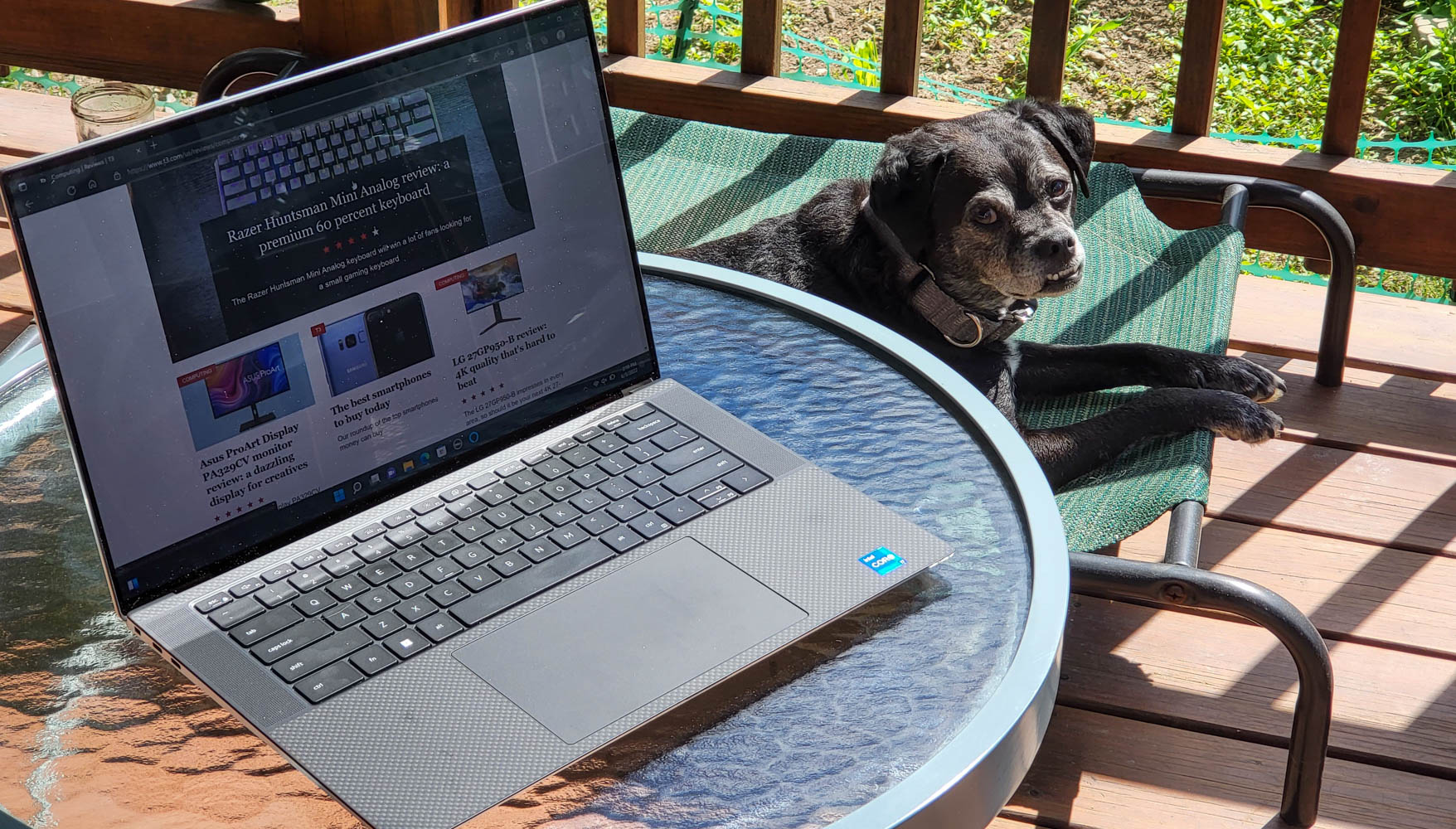
Despite this dog's expression, the Dell XPS 15 (9520) does indeed impress.
ALSO CONSIDER
There are a lot of laptops vying for your portable dollar, including other models from Dell. If portability is your priority, consider the Dell XPS 13, which shrinks the screen down but keeps most of the other features of the XPS 15. You lose some screen real estate, a bit of processing power and a Thunderbolt 4 port, though, so it’s a tradeoff.
If you want a 15-inch screen but also want to save money, the Asus VivoBook S15 is worth considering. It has the same screen size as the XPS 15, although with a much lower 1080p resolution. It also has a large keyboard and touchpad, plus a separate numeric keypad that makes number-crunching a bit easier. The Asus VivoBook S15 lacks the processing power of the XPS 15, though, with an older processor, less memory and less data storage.
Sign up to the T3 newsletter for smarter living straight to your inbox
Get all the latest news, reviews, deals and buying guides on gorgeous tech, home and active products from the T3 experts
Richard Baguley has been writing about technology since the 1990s, when he left a promising career in high finance to work on Amiga Format magazine for Future. It has been downhill for him ever since, writing for publications such as PC World, Wired and Reviewed.com. He has tested gadgets as diverse as 3D printers to washing machines. For T3, he covers laptops, smartphones, and many other topics. He lives near Boston in the USA with his wife, one dog, and an indeterminate number of cats.
-
 Smeg adds a touch of navy sophistication to its iconic breakfast set
Smeg adds a touch of navy sophistication to its iconic breakfast setIt's a minimalist's dream
By Lizzie Wilmot Published
-
 My most anticipated Netflix movie of the year gets a wild new trailer
My most anticipated Netflix movie of the year gets a wild new trailerHavoc looks pretty unbelievable
By Max Freeman-Mills Published
-
 Forget the tariffs, Paddington 3 is now on Netflix to bring you joy
Forget the tariffs, Paddington 3 is now on Netflix to bring you joyPaddington In Peru is now streaming on Netflix
By Mike Lowe Published